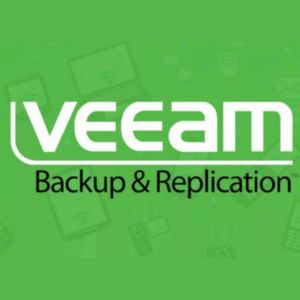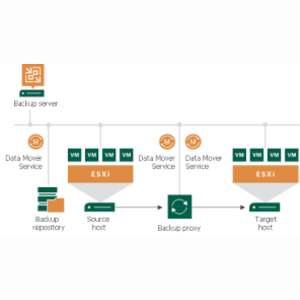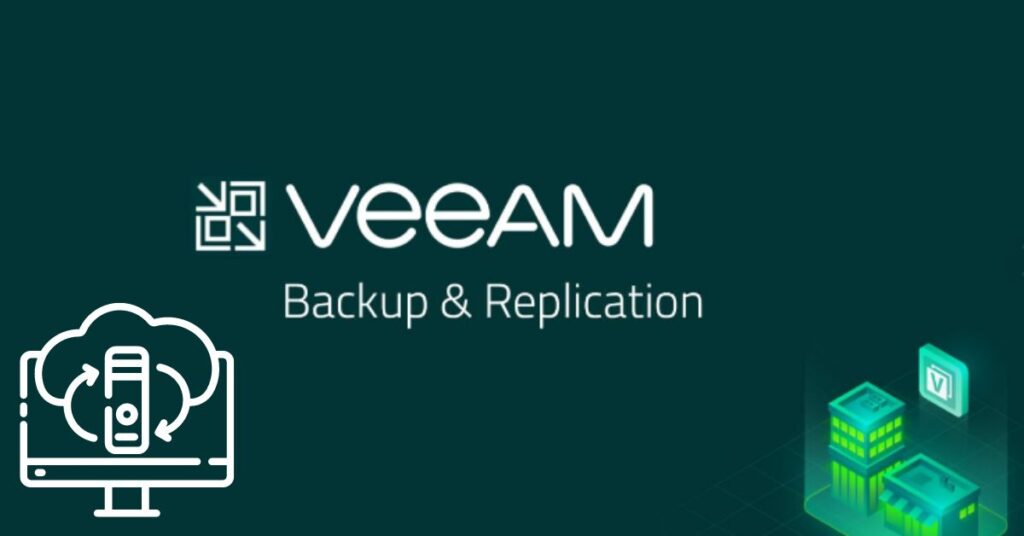Introduction
Information is the lifeblood of organizations in the modern, technological world. Extreme consequences, including lost margin time, financial hardship, and diminished standing, might result from fundamental information misfortune or inaccessibility. These issues are addressed by the potent solution Veeam Backup and Replication, which provides extensive data protection features. We will explore the features, advantages, and best practices of Veeam Backup and Replication in this article.
Table of the Content
| Overview | Features and benefits of Veeam Backup and Replication- Supported platforms and environments |
| Veeam Work | Backup technique and cause of action. |
| Best Practices for Veeam Backup and Replication | Planning and designing Veeam Backup and Replication- Setting up backup and replication schedules- Monitoring and managing backups and replicas- Offsite and cloud backup techniques for testing and confirming backup and replication integrity |
| Conclusion | Recap of Veeam Backup and Replication features |
| FAQs |
Overview
It is an industry-leading data protection solution that companies of all sizes trust. It provides a wide range of components that ensure the availability and retrievability of fundamental information. Let’s look into a few key components of Veeam Reinforcement and Replication.
Veeam Backup and Replication’s characteristics and advantages

Several capabilities offered by Veeam Backup and Replication improve data protection and recovery, including:
High-speed backups: Veeam uses specialized compression algorithms and cutting-edge technologies like Changed Block Tracking (CBT) to carry out quick and effective backups.
Instant recovery: By operating virtual machines (VMs) directly from backup files, Veeam enables you to recover your data quickly while minimizing downtime and ensuring business continuity.
VMs may be replicated to offshore sites with Veeam, adding an extra layer of data security and facilitating speedy failover in the event of a disaster.
Veeam reduces storage and removing redundant data blocks and compressing data during backups, which results in significant storage savings.
Supported Platforms and Environments
Numerous platforms and settings are supported with Veeam Backup and Replication, including:
Microsoft Hyper-V and VMware vSphere are two virtualization platforms.
actual servers and workstations with Linux or Windows operating systems.
cloud platforms like Microsoft Purple and Amazon Web Services (AWS).
How Veeam Backup and Replication Works

This adheres to a thorough data replication and protection process .Backup and replication configuration: Administrators select parameters like backup frequency, retention policies, and target locations when defining backup and replication operations.
Veeam offers a variety of backup options, such as incremental, differential, and synthetic complete backups.Veeam makes it possible to replicate virtual machines to backup sites in the replication and failover process. Administrators can start failover procedures to immediately switch to the replicated VMs in the event of a primary site failure, reducing downtime.
Best Practices for Veeam Backup and Replication
When using this software, take into account the following best practices to ensure peak performance and dependability.
Planning and creation: To create a successful backup and replication strategy, evaluate the infrastructure needs, recovery goals, and organizational requirements.
Schedules for backup and replication : Establish backup and replication plans in accordance with your recovery time and point objectives (RTOs). Regularly evaluate and adjust these schedules as necessary.
Monitoring and management: Regularly keep an eye on backup and replication jobs to ensure their success. Utilize Veeam’s monitoring and reporting tools to quickly find and fix any problems.
Testing and verification: To confirm the accuracy of backups and replicas, periodically test the restore and fail over procedures.
Offsite and cloud backup: Use these techniques to safeguard against site-level catastrophes.
Conclusion
A strong and complete solution for information insurance and replication is provided by Veeam Reinforcement and Replication. With its powerful components, such as quick reinforcements, instant recovery, and flexible replication options, enterprises can safeguard their essential information and ensure progress despite potential disasters. Associations may protect their information resources by adhering to best practices and deploying Veeam Reinforcement and Replication to its most potential.
FAQs
Can virtual machines use Veeam Backup and Replication?
Yes, It is specifically made to safeguard and restore virtual machines that are running on the vSphere and Hyper-V platforms from VMware and Microsoft.
Do you support fast recovery with Veeam?
You may run virtual machines directly from backup files with Veeam’s immediate recovery features, which allows for quick data restoration and little downtime.
How does Veeam guarantee data integrity while replicating?
Veeam uses sophisticated data verification strategies to guarantee the consistency and integrity of replicated data, such as check sums and data validation algorithms.
Veeam Backup and Replication: Is it appropriate for large businesses?
Absolutely. It offers scalable and effective data security and replication solutions for companies of all sizes, including huge corporations.

